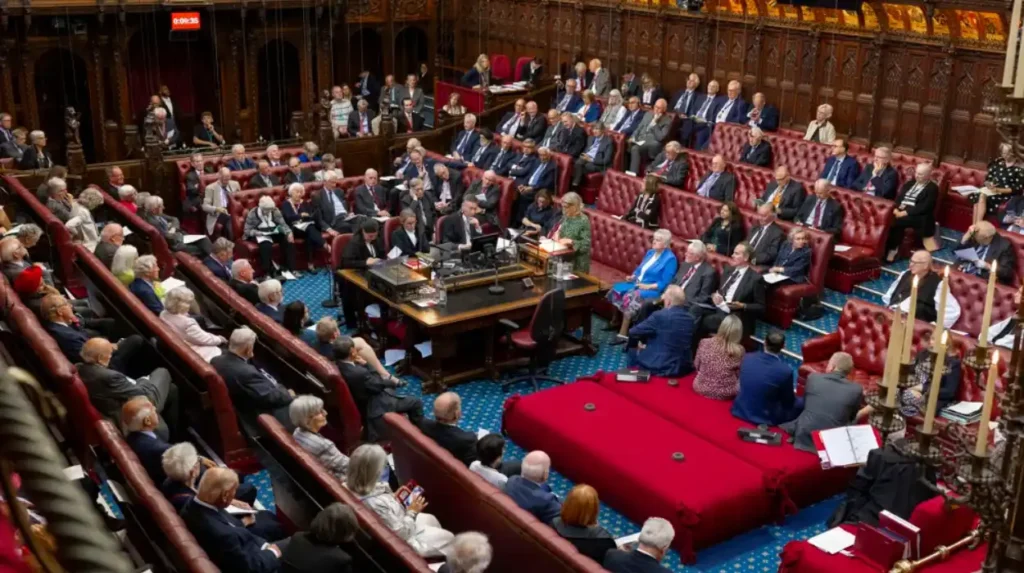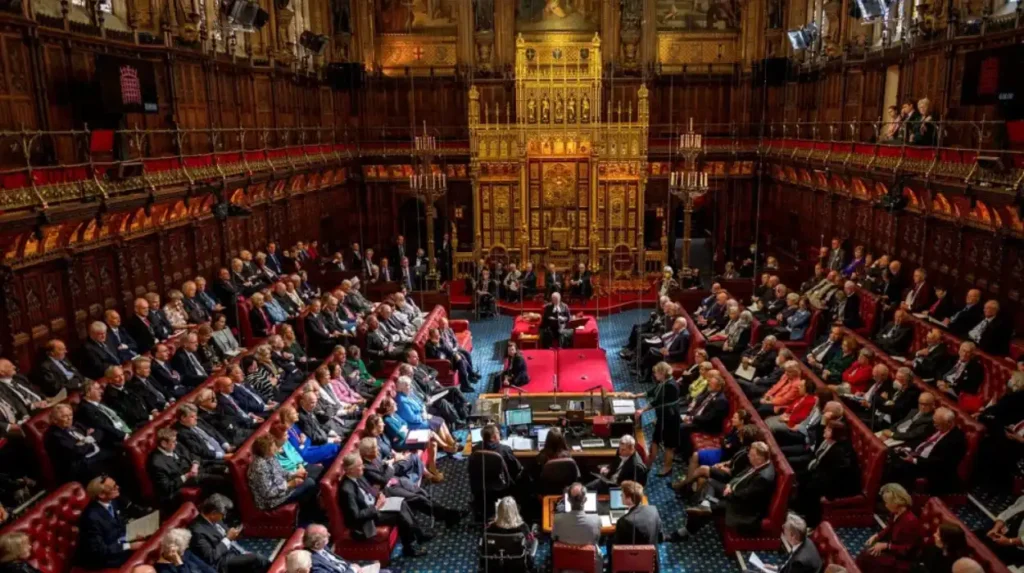The relationship between the House of Commons and the House of Lords has always been at the heart of the UK constitutional landscape. The House of Commons expresses a democratic mandate for the people, whereas the House of Lords has a more limited role as a revising and scrutinizing chamber. The House of Lords’ refusal to block certain pieces of legislation is partly institutionalized by the Salisbury Convention, introduced in 1945. How far does the Salisbury Convention actually limit the power of the House of Lords? This article examines the Salisbury Convention, how the Convention has been applied in recent times, and how far the House of Lords is constrained in practice.
The Purpose of the Salisbury Convention
The Salisbury Convention was designed to find a balance between two competing principles:
- The democratic legitimacy of the House of Commons is the elected body in Parliament, it represents the best reflection of the will of the people.
- The importance of scrutiny and revision through the work of the House of Lords—as a revising chamber, the House of Lords has a role to make sure that legislation is fit for purpose (as their expertise and knowledge of the technicalities of legislation will contribute to amendments and corrections) and that acts of legislation also look long-term.
By simply ensuring that the House of Lords could not veto manifesto bills, the Salisbury Convention attempted to ensure that the government could not be tied into inaction or deadlock and allow the government to fulfill their promises. For Lords retained delaying, amending, and scrutinizing legislation so that their constitutional function is not lost.

Scope of Salisbury Convention
The Salisbury Convention applies, in general, to those bills that are part of or all of the government’s promises in its party manifesto. It does not prevent the Lords from:
- Amending bills for which clarifications would be made regarding their specific provisions.
- Delaying legislation for a limited period according to the provisions of the Parliament Acts of 1911 and 1949.
- Refusing to consider bills otherwise on the basis of commitments contained in the manifesto.
- Scrutinising any secondary legislation and non-legislative policy measures.
The convention greatly restricts lords’ outright rejection of manifesto legislation, but it does not negate their role in legislative oversight.
Salisbury Convention and Parliamentary Sovereignty
The Salisbury Convention is very closely correlated with the principle of parliamentary sovereignty. Under the uncodified constitution of the UK, sovereignty belongs finally to Parliament, with the Commons at the forefront because of its elected status. The convention recognizes that the House of Lords is unelected; it clashes with the mandate of the elected Commons. The convention being a political understanding without the rigor of law does not embody any setting for legal enforcement, so it depends on self-restraint and tradition.
To What Extent Does the Convention Limit the Power of Lords?
The crucial question is the extent to which the Salisbury Convention limits the House of Lords. The answer is subjective.
- In theory, a significant limitation: The Lords cannot stop manifesto bills in the long run; accordingly, governments expect to pass their major policies without interference.
- In practice, there is rather more leeway: the Lords still have the power to scrutinize, amend, and delay legislation and greatly influence it.
- Context-dependent: The viability of the convention is disputed in coalition governments, hung parliaments, and other situations where manifesto commitments have been vague.
In this way, we see that while the Lords lack an outright exercise of veto, the convention allows for considerable interference into the legislative process.
The Salisbury Convention in Action
In the decades since its inception, the Salisbury Convention has been applied in several contexts. In all instances, the Lords accepted the convention allowing manifesto bills to become law, even with resistance. Yet there have necessarily been tensions in practical application:
Labour Government (1945–51) – The first test of the Convention arose with the Labour Government forcing through a number of sweeping reforms. The House of Lords met the challenge of opposition from the Conservative party but still followed through with the Convention, allowing Attlee’s government to put the welfare state in place.
Thatcher Era (1979-90) – When the Conservative majority was in the House of Commons, it prompted radical economic changes that were contested in the House of Lords in a number of cases. The House of Lords investigation was thorough in its scrutiny and amendments, but the House of Lords liberated legislation to be passed consistent with the convention with respect to manifesto items.
House of Lords Reform (1999)—A statute from Tony Blair’s government resulted in a reduced number of hereditary peers sitting in the House of Lords. The House of Lords would accept the general principle of reform but conducted significant scrutiny to show that there was nothing in the convention that would prevent them from delaying the legislation proposed.
Coalition Government (2010-15) – The recent coalition government forced consideration of how the Salisbury Convention might be applied in the absence of a party’s manifesto. From time to time the House of Lords resisted coalition bills on behalf of the assumption that there was less of a mandate, even from one party.
Brexit Legislation (2017–19) – The convention was debated significantly throughout Brexit due to criticism about manifesto promises being vague or disputed, providing the Lords with a greater basis to modify and delay significant matters of legislation.
These examples show that the convention may provide some level of guidance, but there is a considerable amount of political contestation and flexibility in terms of how it works in practice.
The relationship with the Parliament Acts
While the Parliament Acts of 1911 and 1949 limit the power of the Lords by allowing the Commons to abolish their veto subject to a delay, the Salisbury Convention exists alongside this problem, and the Parliament Acts impose legal constraints while the Salisbury Convention installs a political constraint.
The Acts of Parliament mean that the Lords cannot totally deny government legislation, although they can, with subsequent amendments, alter the legislation and certainly influence the trajectory of legislation.

Contemporary relevance
Today, the Salisbury Convention influences politics in the UK. But it is important to note a number of issues have highlighted its continuing relevance:
- The decline of two-party politics: Single-party manifestos do not carry that authority anymore given fragmented results at elections.
- The rise of constitutional arguments: Issues like Brexit and the post-devolution have highlighted the idea that manifestations do not necessarily signify clear (or manifest) agreement in the name of the public.
- Ongoing House of Lords reform debates: The arguments and debates around a continuing reform of the House of Lords (still raised again as I write) mean that the very premise of a more representative or prominent upper chamber challenges the assumptions underpinning the convention.
It proves worthwhile in preventing legislative deadlocks and ensuring the stability of the government.
In what ways does the Salisbury Convention limit the power of the Lords?
There are limits to the authority of the House of Lords in regard to government manifesto bills as laid down by the Salisbury Convention. It prevents peers from using their unelected position to block the core policies of a democratically elected government. But the limitation is temporary. The Lords tend to wield enormous influence through scrutiny, amendment, and delay. The unwritten nature of the convention, its dependence on the political context, and the rise of coalition and minority governments render it more often contested.
Pragmatically, the Salisbury Convention is a very powerfully expressed restraint, but, theoretically, it can be stretched like rubber. It has definitely curtailed the Lords’ veto power over the legislation initiated by the government, while it hasn’t stripped them of their revising role or political importance. Lords remain an important constitutional check even within the boundaries of the convention.


